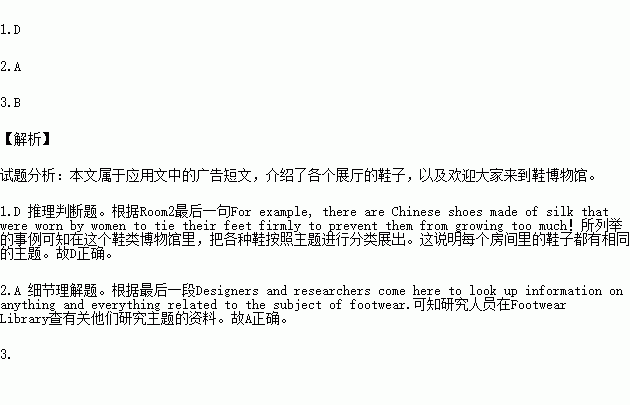题目内容
Welcome to one of the largest collections of footwear in the world that will make you green with envy. Here at the Footwear Museum you can see exhibits from all over the world. You can find out about shoes worn by everyone from the Ancient Egyptians to pop stars.
Room 1
The celebrity footwear section is probably the most popular in the entire museum. Started in the 1950s there is a wide variety of shoes and boots belonging to everyone from queens and presidents to pop stars and actors! Most visitors find the celebrities' choice of footwear extremely interesting.
Room 2
Most of our visitors are amazed-and shocked-by the collection of "special purpose" shoes on exhibition here at the Museum of Footwear. For example, there are Chinese shoes made of silk that were worn by women to tie their feet firmly to prevent them from growing too much!
Room 3
As well as shoes and boots the museum also exhibits shoe-shaped objects. The variety is unbelievable. For example, there is a metal lamp that resembles a pair of shoes, and Greek wine bottles that look like legs!
The Footwear Library
People come from all over the world to study in our excellent footwear library Designers and researchers come here to look up information on anything and everything related to the subject of footwear.
1.All exhibits in each room .
A. belong to the same social class
B. have the same shape
C. are made of the same material
D. share the same theme
2.Which of the following is true according to the text?
A. Researchers come to the Footwear Library for data
B. Room 2 is the most visited place in the museum.
C. Room 3 has a richer variety of exhibits than the other two.
D. The oldest exhibits in Room l were made in the 1950s
3.The purpose of the text is to get more people to _____________.
A. do research B. visit the museum
C. design shoes D. follow celebrities

